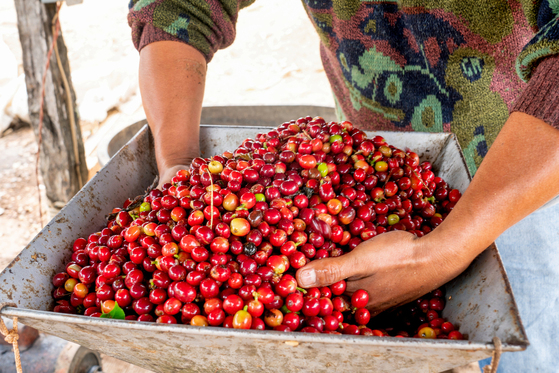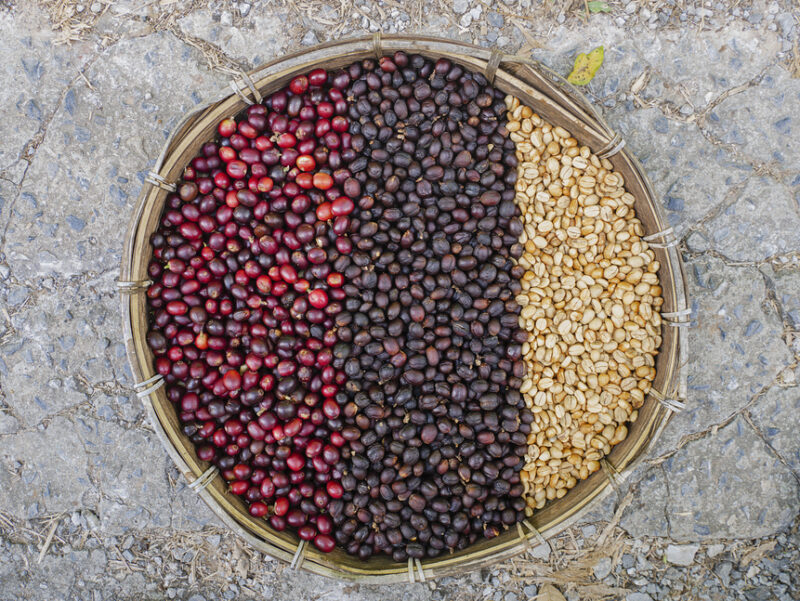We won’t get too far into the reproductive systems of plants, but that’s about it – they are the bits that carry the seed. That’s why any fruit you can think of – tangerines, watermelons, even tomatoes, have seeds in them. We typically use the word to refer to the edible part. (Coffee is technically a fruit – but you wouldn’t straight up eat one.)
Botanically, however, the word stretches to include any seed-containing structure, like bean pods, corn kernels, and wheat grains – stuff that’s not immediately edible.
We are, of course, mostly interested in the beans. Coffee beans are not themselves fruit – but they are part of a fruit. The coffee bean is a seed of the coffee plant. In fact, it’s not technically a bean at all – it’s just a seed. (They do look like beans, but beans are the seeds of an entirely different plant family.)
When coffee is picked from the coffee plant, it’s in the form of red ‘cherries’ (or pink, yellow or orange, depending on the variety of the plant). They grow alongside green, waxy leaves on the branch of the trees, and the cherries are the fruits of the plant. After it flowers, it takes almost a full year for a cherry to mature ready for harvesting (and around five years for a coffee plant to reach full production capacity after it’s planted).

